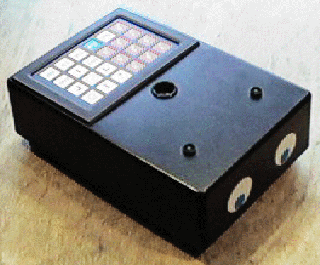|
|

Non-volatile memory
PIP has non-volatile memory. It can remember programs and settings even when it is turned off.
When you turn PIP off at the end of a lesson it does not lose the program. You can charge it up overnight and when you turn it on again next day it is as if it had never been turned off.
This means that you can program PIP ready for when the children see it the first time. The evening before you introduce PIP you might program it to go from your desk to the door, sing, and then come back to you. When you show PIP to the children you can demonstrate what it can do and then start the discussion about how to make PIP do things. They can then work out how to do a similar program for themselves.
Because of the non-volatile memory you will need to teach the children to Clear Memory before starting a new program. On the previous version of PIP, some children used the ON/OFF switch instead of clearing memory.
Now the ON/OFF and Clear Memory functions are entirely separate. The only way to rub out programs is to use the program editing keys.
PIP normally moves in centimetres and turns in degrees; a right angle is right 90 and a 10 centimetre move is forwards 10.
Sometimes you will want to use another movement size. For example,young children find it frustrating if they press CM, forwards, 1, Go in the correct order and then get a barely discernible movement! They would find it easier if PIP moved in 10s of centimetres and 10s of degrees, or perhaps PIP lengths and right angles.
You may also decide to change the unit sizes to match a resource that you already have. For example you could make PIP move in tile sizes or the size of squares on a playmat.
When PIP is on charge, you can enter a password and set the movement units to any number of millimetres between 1 and 999. You can also set the turn units to any number of degrees between 1 and 999. PIP also has the facility to set the pause units to multiples of 1/10th second.
It can be fun (and challenging) to set the turn units to inconvenient values such as 185 degrees or 350 degrees and see if able KS2 children can make the mathematical leap to overcome the problem.
PIP is now easier for some special users. Correct keypresses give visual as well as audible cues to make it easier for profoundly deaf users.
The number buttons give differently-pitched beeps for each number. This not only helps visually-handicapped users but also gives a "signature tune" for useful numbers such as 360 or 180.
PIP now has a 12 mm hole all the way through at its turning centre. If you drop a pen through, it will leave a trail of where PIP has been. Felt tip pens work best. If you use another pen taped to PIP's side you will see why the turning centre is important.
The hole is a visible reference of the turning centre. This helps children understand how PIP gets from place to place by turning around the centre before moving. The hole is the only part of PIP that doesn't move when it turns.
PIP's Test key executes the last instruction in the program. This is very useful during program development as the effect of each program step can be tried out.
For example, if a child is making PIP go to a friend, turn round, and come back again, they could enter forwards 100, press Test and then see that PIP has arrived at the friend.
The child may then try right 45 by mistake. When it is Tested, the amount of turn is clearly not enough. The error can be removed with CE and the correct instruction given. PIP should then be replaced at the friend and the new instruction Tested. This process can be repeated indefinitely as needed.
If the children use Test for each instruction as they solve a problem, they can replace PIP at the start and press Go to see PIP trace out the whole program.
If Test is pressed after a RPT key, PIP will flash and beep for each number of repeats programmed. If it is pressed after an END key it will execute the complete RPT/END phrase the appropriate number of times.


